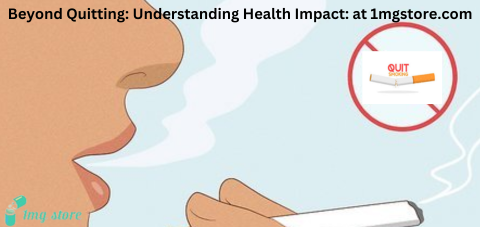
Quit Smoking
-
Generic: Darifenacin XREquivalent Brand: Enablex30 Tablet/s$26.00
-
Generic: Bupropion HClEquivalent Brand: Wellbutrin30 Tablet/s$11.00
-
-
-
Generic: TopiramateEquivalent Brand: Topamax60 Tablet/s$10.50
-
Generic: TopiramateEquivalent Brand: Topamax60 Tablet/s$14.04
-
Generic: VareniclineEquivalent Brand: Chantix28 Tablet/s$42.00Out of stock
-
Generic: Nicotine Polacrilex Gum USPEquivalent Brand: Nicorette10 Gum/s$4.50
-
Generic: Bupropion HClEquivalent Brand: Wellbutrin SR30 Tablet/s$18.00
$202.4 -
Generic: Bupropion HClEquivalent Brand: Wellbutrin XL30 Tablet/s$18.00
Breaking Free: Your Guide to Successfully Quitting Smoking
Quitting smoking is a crucial step towards improving your overall health and well-being. Smoking is a leading cause of preventable diseases and premature death worldwide. This guide will provide you with essential information on how to quit smoking, including treatment options, symptoms you may experience during the quitting process, medications, and various products and aids that can assist you in your journey towards a smoke-free life. Some of the Quitting smoking products are Topamac Tablet (Topiramate), Vesigard Tablet (Darifenacin XR) and Generic Bupropion (Buproban Tablet).
Treatment:
Quitting smoking is challenging, but with the right approach, it is entirely achievable. Here are some key steps and strategies for quitting smoking:
Set a Quit Date: Choose a specific date to quit smoking, and make it a commitment. Having a target date can help you mentally prepare for the change.
Seek Support: Inform your friends and family about your decision to quit smoking. Their support can be invaluable during this process. You can also consider joining a support group or seeking counseling to receive professional guidance.
Behavioral Therapy: Behavioral therapies, such as cognitive-behavioral therapy (CBT), can help you identify and address the triggers and habits associated with smoking.
Nicotine Replacement Therapy (NRT): NRT products provide a controlled dose of nicotine to help reduce withdrawal symptoms. Common NRT options include gum, patches, lozenges, nasal sprays, and inhalers.
Symptoms:
Quitting smoking can lead to both physical and psychological symptoms, often referred to as withdrawal symptoms. These symptoms can vary from person to person but may include:
- Nicotine cravings
- Irritability and mood swings
- Difficulty concentrating
- Increased appetite and weight gain
- Insomnia
- Coughing and sore throat
- Anxiety and depression
These symptoms are usually temporary and can be managed with proper support and strategies.
Medication for Quit Smoking:
Several medications can aid in smoking cessation:
Nicotine Replacement Therapy (NRT): NRT products, like nicotine gum and patches, deliver a controlled amount of nicotine to reduce withdrawal symptoms.
Prescription Medications:
- Bupropion (Zyban): An antidepressant that can reduce nicotine cravings.
- Varenicline (Chantix): A medication that reduces nicotine cravings and withdrawal symptoms.
It's essential to consult a healthcare professional before starting any medication to quit smoking. They can help you choose the most suitable option based on your individual needs.
Quit Smoking Products and Aids:
Various products and aids are available to support your smoking cessation efforts:
Nicotine Gum: Nicotine gum is a chewable NRT product that allows you to control your nicotine intake. It can help reduce cravings.
Nicotine Patches: Nicotine patches are worn on the skin and deliver a steady, controlled dose of nicotine throughout the day, reducing withdrawal symptoms.
Nicotine Lozenges: These are discreet and dissolve in the mouth, providing a controlled release of nicotine.
Nicotine Nasal Sprays and Inhalers: These deliver nicotine through the nasal passages or inhalation, mimicking the hand-to-mouth action of smoking.
E-cigarettes (Vaping): While controversial, some people use e-cigarettes as a less harmful alternative to traditional smoking. However, long-term safety is still being studied.
Apps and Online Programs: Several mobile apps and online programs offer support, tracking tools, and motivational resources to help you quit smoking.
Remember that quitting smoking is a personal journey, and what works best for one person may not work for another. It often requires multiple attempts, so don't be discouraged by setbacks. Seek support, stay committed, and focus on the long-term benefits of a smoke-free life. Consulting a healthcare professional is an excellent first step in your journey to quit smoking.
Embarking on the journey to quit smoking is a transformative decision that holds the promise of improved health and a renewed sense of well-being. Breaking free from the grip of nicotine addiction requires determination, support, and strategic lifestyle changes. In this exploration of the quit smoking journey, we'll delve into the reasons to quit, effective cessation strategies, and the positive impacts on physical and mental health.
Understanding the Need to Quit:
The decision to quit smoking is a profound acknowledgment of the detrimental effects of tobacco on health. Explore the myriad reasons to quit, from reducing the risk of chronic diseases like heart disease and cancer to improving respiratory function and overall vitality. Understanding the immediate and long-term benefits becomes a powerful motivator in the quest for a smoke-free life.
Creating a Personalized Quit Plan:
Quitting smoking is a unique journey for each individual. Dive into the importance of creating a personalized quit plan tailored to specific habits, triggers, and motivations. Whether through gradual reduction, cold turkey, or the assistance of nicotine replacement therapies, a well-thought-out plan provides a roadmap for success.
Building a Support System:
Quitting smoking is a challenging endeavor, and having a support system can make all the difference. Explore the role of friends, family, and support groups in providing encouragement, understanding, and accountability. Engaging with others who share similar goals fosters a sense of community and reinforces the commitment to a smoke-free lifestyle.
Utilizing Nicotine Replacement Therapies:
Nicotine replacement therapies (NRTs) can be valuable tools in the quit smoking journey. Delve into the different forms of NRTs, such as patches, gum, lozenges, and inhalers, understanding how they help manage cravings and withdrawal symptoms. Learn about their appropriate usage and potential benefits in easing the transition to a smoke-free life.
Addressing Triggers and Habits:
Identifying and addressing triggers and habits associated with smoking is a crucial aspect of successful cessation. Explore common triggers, whether stress, social situations, or routine activities, and discover effective strategies to cope with them without resorting to smoking. Breaking the psychological aspects of the habit contributes significantly to long-term success.
Coping with Withdrawal Symptoms:
Withdrawal symptoms are a natural part of the quitting process. Understand the physical and psychological challenges that may arise, from irritability and cravings to changes in mood and sleep patterns. Explore practical coping mechanisms, such as exercise, deep breathing, and mindfulness, to navigate withdrawal symptoms and maintain focus on the journey to quit smoking.
Celebrating Milestones and Staying Motivated:
Quitting smoking is a series of victories, each milestone representing progress and achievement. Learn the art of celebrating these milestones, whether it's a day, a week, or a month without smoking. Explore ways to stay motivated through positive reinforcement, visualizing the health benefits, and embracing the freedom from addiction as inspiration.
Improving Physical and Mental Health:
The positive impacts of quitting smoking extend far beyond the absence of cigarettes. Explore the remarkable improvements in physical health, including enhanced lung function, reduced risk of cardiovascular diseases, and a boost in overall vitality. Delve into the positive effects on mental health, from improved mood and concentration to a heightened sense of well-being and self-esteem.
Creating a Smoke-Free Environment:
Transforming your environment is a key element in the quit smoking journey. Explore the importance of creating a smoke-free living space, whether at home or work. Implementing changes such as disposing of smoking paraphernalia, cleaning fabrics and surfaces, and seeking smoke-free social settings helps reinforce the commitment to a smoke-free lifestyle.
The Ongoing Commitment to Quitting:
Quitting smoking is not just a one-time decision; it's an ongoing commitment to a healthier life. Explore the importance of vigilance, continuous self-assessment, and adapting strategies as needed. Recognize that the journey may have its challenges, but with perseverance and a steadfast commitment, a smoke-free future is within reach.
Conclusion:
In conclusion, the journey to quit smoking is a transformative endeavor that holds the promise of improved health, increased vitality, and a sense of liberation from addiction. By understanding the motivations to quit, creating a personalized plan, building a support system, and addressing triggers and habits, individuals can navigate the challenges of cessation successfully. Embracing the positive impacts on physical and mental health, celebrating milestones, and maintaining a smoke-free environment contribute to a fulfilling and sustained smoke-free life. As individuals embark on this transformative journey, they not only break free from the harmful effects of smoking but also embrace a future marked by vitality, well-being, and the freedom to live life to the fullest.
Quitting smoking is a crucial step towards improving your overall health and well-being. Smoking is a leading cause of preventable diseases and premature death worldwide.


